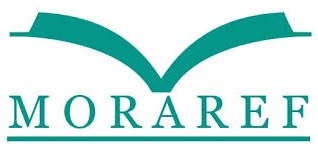Traditional Woven Fabric Craftsmen into Barana: A Creative Space Based on the Culture of the North Toraja Community 2017-2023
Authors (s)
(1) Indriani Pratiwi Yusuf (Universitas Negeri Makassar)
Indonesia
(2) Asmunandar Asmunandar
 (Universitas Negeri Makassar)
(Universitas Negeri Makassar) Indonesia
(3) * Ahmadin Ahmadin

 (Universitas Negeri Makassar)
(Universitas Negeri Makassar) Indonesia
(*) Corresponding Author
AbstractThis study aims to determine the background of the emergence of traditional woven fabric craftsmen in To'barana North Toraja Regency in 2017-2023, the development of traditional woven fabric craftsmen in To'barana, and the social life of traditional woven fabric craftsmen. This research is a qualitative study that uses a historical approach method with four stages of work, namely: heuristics (finding and collecting sources), source criticism (external criticism and internal criticism), interpretation (interpretation of sources), and historiography (writing history). Data collection methods were carried out by conducting field research, interviews, and documentation. The results of this study indicate that the beginning of the emergence of traditional woven fabric craftsmen in To'barana was marked by historical relics in the form of sumpu woven fabric (endless woven fabric), which was made by one of the descendants of the nobles in To'barana, namely Ne'butung and Ne'panggau during the Japanese occupation which was used as a pennammu' (blanket) needed during the war. So that this weaving heritage has become one of the main professions for the To'barana Village community which was designated as a Weaving Village in 2017-2023. Supported by production equipment and support from the North Toraja Regency government, it also has an impact on marketing development, where the craft has been marketed outside Toraja Regency such as Makassar and Papua. |
Keywords
Full Text: PDF
Refbacks
- There are currently no refbacks.
Copyright (c) 2025 Indriani Pratiwi Yusuf, Asmunandar Asmunandar, Ahmadin Ahmadin

This work is licensed under a Creative Commons Attribution-ShareAlike 4.0 International License.
This ejournal system and its contents are licensed under
a Creative Commons Attribution-ShareAlike 4.0 International License








.png)









